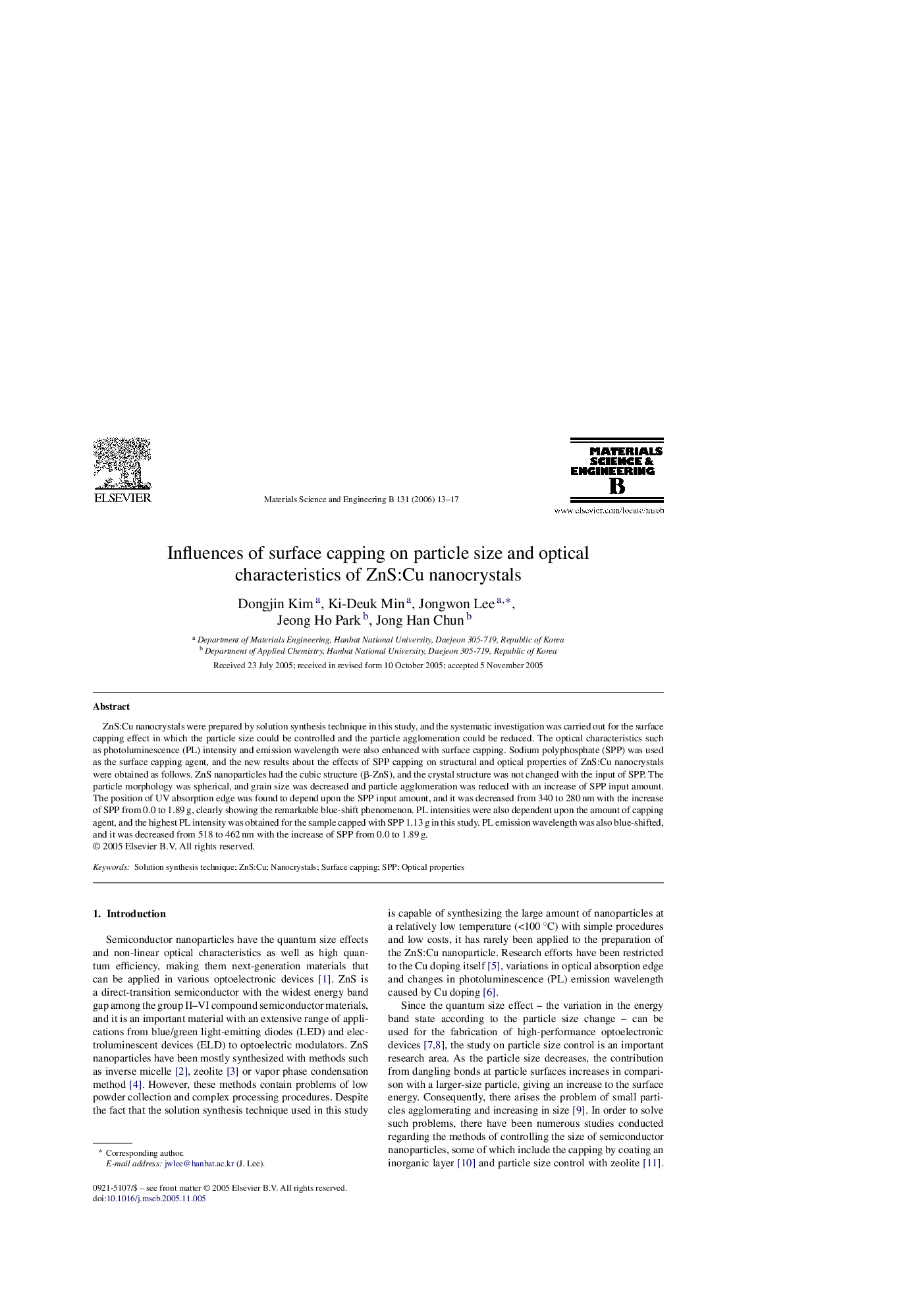| Article ID | Journal | Published Year | Pages | File Type |
|---|---|---|---|---|
| 1531882 | Materials Science and Engineering: B | 2006 | 5 Pages |
ZnS:Cu nanocrystals were prepared by solution synthesis technique in this study, and the systematic investigation was carried out for the surface capping effect in which the particle size could be controlled and the particle agglomeration could be reduced. The optical characteristics such as photoluminescence (PL) intensity and emission wavelength were also enhanced with surface capping. Sodium polyphosphate (SPP) was used as the surface capping agent, and the new results about the effects of SPP capping on structural and optical properties of ZnS:Cu nanocrystals were obtained as follows. ZnS nanoparticles had the cubic structure (β-ZnS), and the crystal structure was not changed with the input of SPP. The particle morphology was spherical, and grain size was decreased and particle agglomeration was reduced with an increase of SPP input amount. The position of UV absorption edge was found to depend upon the SPP input amount, and it was decreased from 340 to 280 nm with the increase of SPP from 0.0 to 1.89 g, clearly showing the remarkable blue-shift phenomenon. PL intensities were also dependent upon the amount of capping agent, and the highest PL intensity was obtained for the sample capped with SPP 1.13 g in this study. PL emission wavelength was also blue-shifted, and it was decreased from 518 to 462 nm with the increase of SPP from 0.0 to 1.89 g.
